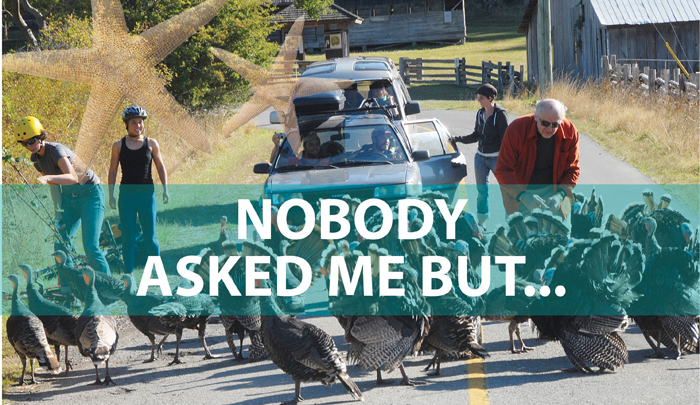Have you heard that they’ve put a new big box store at Cape Scott on the northern tip of Vancouver Island? Well, I have to admit I’m not 100 per cent accurate on this information and you could accuse me of somewhat exaggerating the truth. However, if you are looking for refrigerators, toys, or chunks of Styrofoam, you might find what you need strewn along the rocky shoreline of Scott Channel.
What I’m alluding to here are the five cargo containers that fell off the MV Zim Kingston and managed to float 400 kilometres north until they broke open against the rocks before they had a chance to drift out into Queen Charlotte Sound.
If that wasn’t a bad enough disaster, those five containers were the lucky ones; at least they had the chance to experience some of the spectacularly scenic views along the coastline. The other 104 containers that fell off the cargo ship managed to sink right down to Davy Jones’ locker at the bottom of the sea.
Nobody is quite sure how it happened. The vessel had over 2,000 containers aboard and was on its way from South Korea to Vancouver. It encountered heavy seas just west of the Strait of Juan de Fuca off Cape Flattery and that’s when the containers decided to jump ship. The ship was given permission to anchor at Constance Bank, 7.5 kilometres south of Victoria, but the bad luck continued. Two of the containers still on board caught fire and although most of the crew had to abandon ship, the captain and four of his officers remained on board and spent the next week fighting back the blaze that was spewing toxic smoke into the atmosphere.
If you want to put a positive spin on the incident, you could say that the fire was eventually extinguished and almost 1,900 containers made it to port (although many of them were damaged). That’s a pretty good percentage, don’t you think?
I guess it’s not really a laughing matter. As recently as 2016, approximately 130 million shipping containers with an estimated value of $4 trillion were shipped around the world. The World Shipping Council estimates that almost 1,600 containers are lost at sea each year. Although many of these incidents are a result of catastrophic events such as hurricanes and shipwrecks, there are more than a few cases that are attributable to neglect and incompetence. For instance, in 2018, one of the containers that fell off the Maersk Shanghai cargo ship carried three tons of sulphuric acid. When the metal of the container corrodes, as it inevitably will, it’s guaranteed that some creature down there is going to have a really bad acid trip.
Getting back to the recent spill by the MV Zim Kingston, two of the missing containers carried hazardous materials used in the mining industry. The chemicals, potassium amyl xanthate and thiourea dioxide, according to the Coast Guard, “are not bioaccumulating agents, meaning that if there was human contact, the chemicals do not accumulate in the body faster than they are excreted and there is a very low risk of poisoning or toxicity.” Whew. I feel a lot better.
Perhaps it’s possible to turn these marine mishaps to our advantage. Imagine an entire tourist industry based on the discovery of these huge containers lining the seabed. Instead of deep sea divers from far off regions of the world paying big bucks to explore rusting shipwrecks, they could be playing a big stakes scavenger game hunt for missing (or strategically placed) containers filled with fabulous booty.
Who couldn’t use a giant steel container chock full of Christmas decorations? Reports from the shipping agent list containers filled with treasures including sofas, poker tables, yoga mats and stand-up paddle boards. Imagine prying open one of these big boys and finding it packed to the brim with aquariums or bottled water.
What about turning these lost-at-sea containers into a spectator sport? Just dump them all in one spot and let the wind and currents have their way with them. Have gamblers bet on which one will drift the farthest. It could be a deep sea version of the zucchini races at the Salt Spring Fall Fair.
Wait. There’s more. I’m on a roll now. Why not lay them out in a grid pattern much like the aisles at Costco or Walmart? But instead of aisles and lanes, you organize the containers geographically. You can find car parts in Hecate Strait, or mattresses in Desolation Sound. There’s a great deal on air conditioners at the north end of Jervis Inlet. Just back up the old barge and start winching. It gives a whole new meaning to a “truckload” sale.
We wouldn’t be the first ones to try to twist these lost containers at sea into positive events. In 2014, the Monterey Bay Aquarium Research Institute reported that “the physical presence of the container provided a surface that immobile animals, such as barnacles, could latch on to and an elevated place from which predators could hunt.” Consequently, these containers could possibly contribute a reef-like structure for such diverse organisms as tubeworms, snails, sea squirts and scallops.
How illuminating! Not only are these container spills not actually harming the environment but their presence on the ocean floor is actually a helpful stepping stone for the underwater ecosystem. Way to go, MV Zim Kingston! Maybe this is how the lost continent of Atlantis got started.
Nobody asked me, but it looks like we’re in for a whole mess of stormy weather ahead. What with atmospheric rivers, heat domes and cyclone bombs looming above us, there’s bound to be a huge stretch of rough water that we will have to navigate through. As for me, I’ll be bottom-feeding, along with the tubeworms and sea squirts, on the Mr. Brief sunken container reef in Trincomali Channel.

